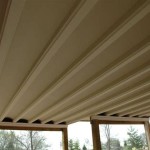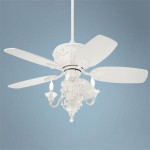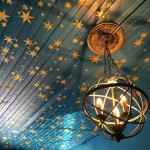Installing Ceiling Fans on Sloped Walls: A Comprehensive Guide for House Design
Ceiling fans are increasingly popular for their energy efficiency and aesthetic appeal, often serving as both functional cooling devices and decorative elements in contemporary house designs. When dealing with sloped ceilings, however, the installation process becomes more complex, requiring careful planning and specialized hardware to ensure safety, optimal performance, and visual harmony. This article provides a detailed guide on installing ceiling fans on sloped walls, covering key considerations, essential tools, and step-by-step instructions.
The installation of a ceiling fan on a sloped ceiling differs significantly from a standard, flat-ceiling installation. The primary challenge lies in ensuring the fan hangs straight and level, preventing wobbling, noise, and potential safety hazards. This requires a mounting system specifically designed to accommodate the angle of the ceiling. Additionally, the proper positioning of the fan is crucial for effective air circulation, which is particularly important in rooms with non-standard ceiling heights and angles.
Key Considerations Before Installation
Prior to commencing the installation process, several factors must be carefully evaluated to ensure a successful and safe outcome. These considerations pertain to the structural integrity of the ceiling, the compatibility of the fan with sloped mounting, and the overall aesthetic integration of the fan into the room's design.
1. Structural Assessment: The first and most crucial step involves assessing the structural integrity of the ceiling. Ceiling fans, particularly larger models, can exert significant weight and torque. It is essential to verify that the ceiling joist or support structure at the intended mounting location is capable of supporting the fan's weight and the dynamic forces generated during operation. If the existing structure is deemed inadequate, reinforcement will be necessary. This might involve adding supplementary bracing or replacing the existing joist with a stronger alternative. Consulting with a qualified structural engineer or building contractor is highly recommended, especially in older homes where the original construction may not meet current load-bearing standards.
2. Slope Angle Measurement: Accurately determining the angle of the ceiling slope is critical for selecting the appropriate mounting hardware. Many sloped ceiling fan mounts are designed to accommodate specific angle ranges. Exceeding these limits can compromise the stability and functionality of the fan. An angle finder or bevel protractor can be used to measure the slope accurately. Typically, sloped ceiling mounts are available for angles ranging from 0 to 45 degrees, but specialized mounts can handle steeper slopes. Knowing the exact angle will ensure the correct mount is chosen, preventing installation difficulties and potential safety issues.
3. Fan and Mount Compatibility: Not all ceiling fans are suitable for sloped ceiling installation. It's imperative to select a fan that is specifically designed or approved for use on angled surfaces. Many manufacturers offer fans with features like extended downrods and adjustable canopies that facilitate installation on sloped ceilings. The chosen mount must also be compatible with both the fan and the ceiling angle. Verify the mount's specifications to ensure it meets the fan's weight capacity and the ceiling's slope angle requirements. Consider purchasing the fan and mount as a package to ensure compatibility and simplify the installation process.
4. Wiring and Electrical Considerations: Ensuring proper electrical wiring is paramount for safety and functionality. The electrical box at the mounting location must be rated for ceiling fan installation. Standard electrical boxes are often not strong enough to support the weight and vibration of a ceiling fan. A fan-rated electrical box, typically made of metal and securely attached to the ceiling joist, is required. Furthermore, ensure that the circuit breaker serving the fan location is appropriately sized to handle the fan's amperage draw. If the existing wiring is insufficient or outdated, consider upgrading it to meet current electrical codes. Electrical work should be performed by a qualified electrician to ensure safety and compliance.
5. Downrod Length Selection: The length of the downrod, the metal pipe that connects the fan motor to the mounting bracket, is crucial for optimal airflow and aesthetic appeal. On sloped ceilings, a longer downrod is often necessary to lower the fan blades below the lowest point of the ceiling, ensuring adequate air circulation throughout the room. The appropriate downrod length depends on the ceiling height and the slope angle. A general rule of thumb is to maintain a minimum of 7 feet between the floor and the fan blades. Consider the room's dimensions and the intended use of the fan when selecting the downrod length. Visually, a downrod that is too short can make the fan appear cramped, while one that is too long can create a sense of imbalance.
Essential Tools and Materials
Having the correct tools and materials readily available is essential for a smooth and efficient installation process. The following list outlines the items typically required for installing a ceiling fan on a sloped ceiling:
* Ceiling Fan: Choose a fan specifically designed or approved for sloped ceiling installation.
* Sloped Ceiling Mount: Select a mount that is compatible with the fan and the ceiling angle.
* Downrod: Ensure the downrod is the appropriate length for the ceiling height and slope angle.
* Wire Strippers: Used to remove insulation from electrical wires.
* Wire Connectors: Used to safely connect electrical wires.
* Electrical Tape: Used to insulate electrical connections.
* Screwdriver Set: Includes both Phillips and flathead screwdrivers.
* Pliers: Used for gripping and manipulating wires and hardware.
* Angle Finder or Bevel Protractor: Used to measure the ceiling angle.
* Drill with Drill Bits: Used to create pilot holes for screws.
* Stud Finder: Used to locate ceiling joists.
* Level: Used to ensure the fan is hanging straight.
* Ladder: Used to reach the ceiling.
* Safety Glasses: Used to protect the eyes from debris.
* Work Gloves: Used to protect the hands.
* Voltage Tester: Used to verify that the power is off.
Step-by-Step Installation Instructions
The following instructions provide a general overview of the installation process. It is crucial to consult the manufacturer's instructions for the specific fan and mount being used, as variations may exist. Always prioritize safety and follow all applicable electrical codes.
1. Power Disconnection: The first and most critical step is to disconnect the power to the circuit at the breaker box. Verify that the power is off using a voltage tester before proceeding with any electrical work. This step is essential to prevent electrical shock.
2. Mount Installation: Install the sloped ceiling mount according to the manufacturer's instructions. Locate the ceiling joist using a stud finder and securely attach the mount to the joist using appropriate screws or bolts. Ensure that the mount is properly aligned and securely fastened to the joist. If the existing electrical box is not fan-rated, replace it with a fan-rated box before installing the mount.
3. Fan Assembly: Assemble the ceiling fan motor, blades, and light kit (if applicable) according to the manufacturer's instructions. This typically involves attaching the blades to the blade brackets and then attaching the brackets to the motor housing. Ensure that all screws are tightened securely.
4. Downrod Attachment: Attach the downrod to the fan motor housing, following the manufacturer's instructions. Many fans use a ball-and-socket joint to allow the fan to swivel. Ensure that the downrod is securely attached to the motor and that the ball-and-socket joint moves freely. Thread the electrical wires through the downrod.
5. Wiring Connections: Carefully connect the electrical wires from the fan to the wires in the electrical box, using wire connectors. Typically, the wires are color-coded (black to black, white to white, and green or bare copper to green or bare copper). Ensure that the connections are secure and that no bare wire is exposed. Wrap the connections with electrical tape for added safety.
6. Canopy Attachment: Attach the fan canopy to the mounting bracket, concealing the wiring connections. The canopy typically attaches with screws or bolts. Ensure that the canopy is securely fastened and that it covers the electrical box completely.
7. Blade Balancing: After the fan is installed, it may be necessary to balance the blades to prevent wobbling. Many fans come with a balancing kit that includes small weights that can be attached to the blades. Follow the instructions in the balancing kit to determine where to attach the weights. If the fan continues to wobble after balancing, check that all screws are tightened securely and that the blades are properly aligned.
8. Testing and Final Adjustments: Restore power to the circuit at the breaker box. Test the fan to ensure that it operates correctly at all speeds. Check that the light kit (if applicable) is functioning properly. Make any necessary adjustments to the fan blades or canopy to ensure optimal performance and appearance. Observe the fan for several hours to ensure that it is running smoothly and without excessive noise.
Installing a ceiling fan on a sloped wall requires careful planning, the correct tools, and a thorough understanding of the installation process. By following these guidelines and consulting with professionals when necessary, homeowners can successfully install ceiling fans that enhance the comfort and aesthetic appeal of their homes.

How To Install A Ceiling Fan On Sloped Lemon Thistle

How To Choose A Ceiling Fan For Vaulted Ceilings Lightology

How To Install A Ceiling Fan On Sloped Lemon Thistle

How To Choose A Ceiling Fan For Vaulted Ceilings Lightology

Electrical Mount Ceiling Fan At The Peak Of A Sloped Home Improvement Stack Exchange

Fans On An Angle Installing Ceiling Angled Or Raked

Ceiling Fans For Angled Ceilings

How To Choose A Ceiling Fan For Vaulted Ceilings Lightology

How To Install A Ceiling Fan On Sloped Lemon Thistle

How To Decorate An Angled Wall With Custom Media Room Built Ins
Related Posts








